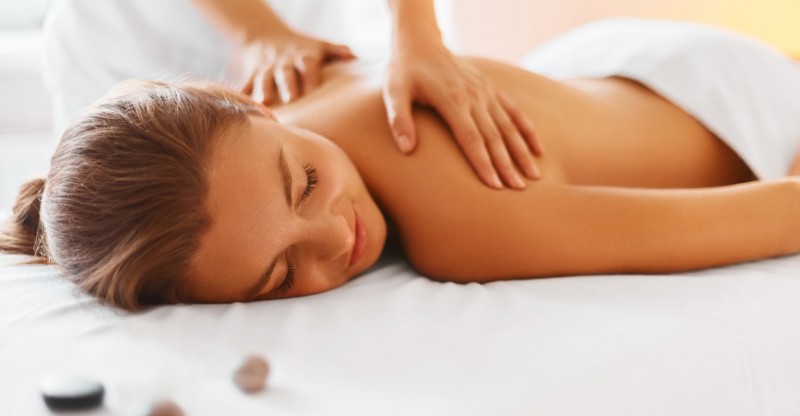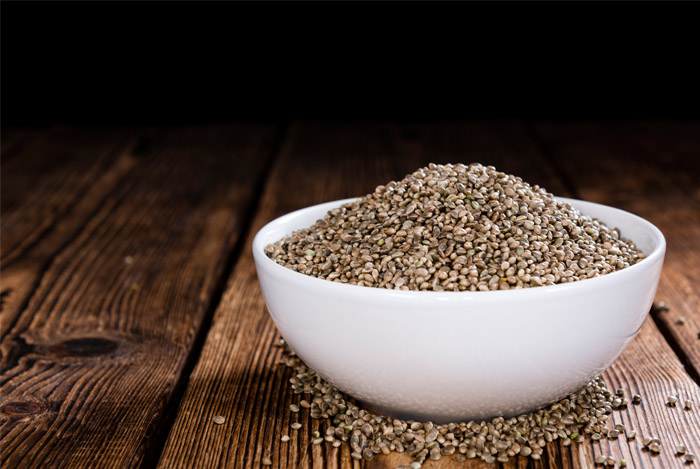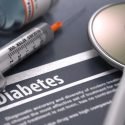31 Evidence-Based Health Benefits of Massage
Massage is a procedure that involves pressing, rubbing or manipulating muscles and soft tissues with hands and fingers.
Even knees, feet, or elbows are used in massage.
Also, sometimes, different mechanical devices can be applied to perform the massage.
People have been practicing it for centuries – in ancient China, Japan, Korea, Greece, and Rome.
Though the majority of people perceive massage only as a tool for the only relaxation, it can bring you numerous health benefits: boost your immune system, make your joints more flexible, help to recover after traumas, etc.
Below you can read about 31 science-backed benefits of massage for your health and well-being.
Helps Relieve Low-back Pain
According to TIME, as many as 8 out of 10 Americans experience back pain at some point in their life.
According to the National Institute of Neurological Disorders and Stroke, Americans spend at least $50 billion every year, looking for ways to relieve low-back pain.
According to a 2011 study published in the Annals of Internal Medicine, massage helps alleviate low-back pain and improves back pain symptoms overall.
The study notes that Swedish and structural massages are the most helpful types of massage to relieve low-back pain.
A 2011 study by the National Institutes of Health showed that massage can help decrease low back pain, and even decrease associated anxiety and depression.
Weekly or biweekly massages also help decrease stiffness in the back.
And according to a 2006 study published by the Yale Prevention Research Center, they improve the range of motion in people suffering from osteoarthritis.
Reduces Anxiety
According to the Anxiety and Depression Association of America, more than 40 million American adults are suffering from anxiety disorders.
Because these disorders affect the quality of life and overall health, relieving anxiety is essential.
According to a 2011 study published in the National Institutes of Health, massage can help reduce the symptoms of anxiety by:
- Increasing neurotransmitters associated with reduced anxiety.
- Decreasing hormones associated with intensified anxiety.
Alleviates Symptoms of Depression
According to the Centers for Disease Control and Prevention, at least 10% of all American adults are suffering from depression.
A 2012 study published in the Journal of Alternative and Complementary Medicine found that massage is effective for managing depression, thanks to its ability to reduce levels of cortisol (a stress hormone).
The study also showed that massage increases serotonin and dopamine (neurotransmitters that are linked to depression).
A 2010 study published by the National Institutes of Health concluded that the anti-depression benefits of massage are similar to those of psychotherapy.
Relieves Stress
Every year, stress-related ailments cost Americans $300 billion in medical bills and lost productivity.
And according to the American Institute of Stress, three out of four doctors’ visits are due to stress-related ailments.
A 2008 study published by the National Institutes of Health showed that massage reduces physiological measures of stress (including hormonal and physical variables).
According to another 2008 study published in the National Institutes of Health, massage is effective for stress relief (on both physical and psychological levels).
This relief is due to massage’s ability to decrease heart rate, blood pressure (both systolic and diastolic), and cortisol levels.
Improves Sleep
According to the Centers for Disease Control and Prevention, 50 to 70 million American adults experience sleep issues that affect their health.
According to a 2012 study by the American Massage Therapy Association, massage is effective for treating insomnia.
It boosts the production of melatonin, which directly affects the quality of sleep.
According to a 1992 study published in the National Institutes of Health, massage improves the quality of sleep.
This improvement is due to its abilities to reduce cortisol levels and alleviate symptoms of anxiety and depression.
Reduces Inflammation
Post-exercise tissue inflammation manifests itself in the form of muscle soreness and joint pain slows post-exercise recovery and causes overuse injuries.
According to a 2012 study published in Science Translational Medicine, massage can reduce inflammation and help people recover after exercise-induced muscle damage.
The study found that massage is effective for the physical rehabilitation of skeletal muscles, as well as reduction of the inflammation and pain that promote recovery after exercise or injury.
Relieves Muscle Tension
Muscle tension often occurs when one or more muscles in the body remain contracted for a prolonged period of time.
According to a 2005 study published by the National Institutes of Health, massage helps directly affect the muscle tissue and release its contraction (which results in muscle-tension relief).
A 2014 study published in the International Journal of Sports Physical Therapy found that massage is helpful for releasing contracted muscles and lengthening tight ones.
The study also found that massage helps treat stiff, sore muscles (while reducing painful contractions, spasms, and nerve compression).
Enhances Exercise Performance
Anyone who exercises (including amateur and professional athletes) faces poor performance (e.g., low energy levels, soreness, slow recovery, frequent injuries, and no visible fitness gains) every now and then.
A 2008 study published by the National Institutes of Health found massage to be effective for enhancing exercise performance, promoting faster recovery, improving conditioning, preventing injuries, and helping maintain fitness.
According to a 2008 study published in the North American Journal of Sports Physical Therapy, massage enhances exercise performance.
This enhancement is due to its abilities to relieve muscle tension, improve soft-tissue function, promote relaxation, and decrease delayed-onset muscle soreness.
Boosts Immune System
According to the American Autoimmune Related Diseases Association, about 50 million Americans suffer from autoimmune disease.
A 2012 study by the Journal of Alternative and Complementary Medicine linked massage to the enhancement of the immune system.
The study found that weekly and biweekly massages effectively decreasing cortisol levels while increasing oxytocin and white blood cells (which help fight disease).
The study also showed that massage affects OT and AVP levels, which play an essential role in the functioning of the immune system.
Relieves Headaches
According to the Migraine Research Foundation, 12% of the world’s population suffers from migraines and intense headaches.
According to a 2009 study published in the National Institutes of Health, massage helps relieve pain from migraines and tension headaches.
The study also found massage to be effective at curbing some of the stress and anger associated with headaches.
A 2002 study by the American Public Health Association found that massage can reduce the frequency, intensity, and duration of headaches.
It also decreases medication usage and increases the range of cervical motion.
Helps Cancer Treatments
According to the American Society of Clinical Oncology, as many as one in three cancer patients suffer from the post-traumatic stress disorder.
A 2012 study by BMJ Supportive and Palliative Care showed that massage provides clinical benefits that ease cancer treatments.
In addition to improving the overall emotional and physical states of cancer patients, the study showed that massage helps reduce their pain, fatigue, and nausea.
Therefore, in combination with standard care, massage can improve the quality of life in cancer patients.
Reduces the Effects of Dementia
In 2010, an estimated 35.6 million people worldwide had dementia.
And according to the National Institutes of Health, that number is expected to double to 65.7 million by 2030.
According to a 2013 study by the Journal of Clinical Nursing, massage helps significantly reduce agitated and aggressive behavior in older adults with dementia.
A 2014 study published in the Journal of Alternative and Complementary Medicine found that massage can be effective for relieving psychological stress in patients with dementia.
The close presence of another human being (the massage therapist) reduces anxiety and distress while promoting comfort.
Relieves Postoperative Pain
According to the Official Journal of the American Pain Society, most patients who undergo surgical procedures experience postoperative pain.
According to a 2007 study published by the National Institutes of Health, massage can relieve postoperative pain by decreasing its intensity (and the distress that comes along with it).
The study also found that massage is an effective tool for relieving acute postoperative pain in patients undergoing major surgical procedures.
It decreases doses of analgesics while increasing the levels of calmness.
A 2010 study published by the National Institutes of Health showed that massage helps patients deal with the challenging physical and psychological aspects of their health condition.
Helps Reduce Fibromyalgia Pain
According to the National Institute of Arthritis and Musculoskeletal and Skin Diseases, fibromyalgia affects 5 million American adults.
A 2002 study published in the National Institutes of Health found that massage is helpful for reducing fibromyalgia pain.
It decreases stiffness, fatigue, anxiety, and depression (all of which are primary symptoms of fibromyalgia).
The study also showed that massage can help reduce fibromyalgia pain by reducing tender points, decreasing cortisol levels, and improving the quality of sleep.
Improves Cardiovascular Health
According to the Centers for Disease Control and Prevention, heart disease is the leading cause of death in the United States (25%).
A 2013 study by the International Journal of Preventative Medicine found that massage is effective at reducing heart rates.
High blood pressure and heart rates are associated with cardiovascular disease (including hypertension and coronary artery disease).
Reduces Pain of Osteoarthritis
According to the Centers for Disease Control and Prevention, osteoarthritis (a degenerative joint disease) affects nearly 14% of American adults 25 years old or over.
According to a 2012 study published in the National Institutes of Health, massage can significantly reduce pain caused by osteoarthritis of the knee.
The study found that Swedish massage is particularly effective for alleviating the pain of osteoarthritis.
Alleviates Joint Replacement Pain
According to Health Line, over 4.5 million Americans are currently living with at least one total knee replacement.
A 2015 study by the Journal of Physical Therapy Science showed that massage can reduce (or even eliminate) pain after total joint replacement (arthroplasty).
The study also found massage to be effective at decreasing muscular tightness, softening tissues, and decreasing swelling in the joints.
In the study, the group that received mechanical massage showed a significant reduction in edema and pain, while also showing improvements in active knee flexion.
Relieves Neck Pain
An estimated 76.5 million Americans (26%) report that they have experienced the pain of some sort for more than 24 hours at a time.
And according to the American Academy of Pain Medicine, about 70% of American adults have had neck pain at least once in their life.
A 2009 study published by the National Institutes of Health linked massage to relieving neck pain (at least in the short term).
The study showed that massage can effectively get rid of discomfort in the neck, and even improve posture to further relieve neck pain.
Decreases Arthritis Pain
According to the Centers for Disease Control and Prevention, in the period between 2010 and 2012, about 52.5 million American adults (22.7%) were annually diagnosed with some form of arthritis (including rheumatoid arthritis).
A 2012 study published in the Journal of Complementary Therapies in Clinical Practice showed that massage can produce positive effects in the treatment of rheumatoid arthritis.
The study found that massage is effective at decreasing pain in patients suffering from rheumatoid arthritis in their arms and hands.
The study also showed that massage has a positive effect on the ability of some patients to control the mobility of their arms and hands.
According to a 2015 study published by the National Institutes of Health, massage is also linked to reducing pain and stiffness, and it improves the overall function of the joints.
Improves Quality of Life in Older Adults
By 2056, it is estimated that the population of Americans 65 years old or over will become larger than the population of American under 18 years old.
And the U.S. Department of Commercea projects that 28 million Americans will be 80 or above by 2040.
According to a 2007 study published in the National Institutes of Health, massage provides clinical benefits of enhancing positive well-being and reducing anxiety and depression in older adults.
The study also found massage to be effective at reducing stress perception, boosting vitality, and improving the quality of life in older adults.
Promotes Relaxation
According to the American Psychological Association, nearly half of Americans report irritability or anger that results from stress.
According to a 2010 study published by the National Institutes of Health, back and hand massages show significant improvements for both the physiological and psychological indicators of relaxation.
And a 2011 study published by the National Institutes of Health found that the relaxation produced by massage can last for at least 16-18 hours.
Lowers Blood Pressure
According to the Centers for Disease Control and Prevention, about 75 million American adults (29%) have high blood pressure.
A 2014 study published in the Journal of Cardiovascular Nursing showed that massage is highly effective at reducing both systolic and diastolic blood pressure.
High blood pressure is a major risk factor for cardiovascular disease.
And a 2013 study published in the National Institutes of Health showed that massage can lower blood pressure for up to 72 hours.
Alleviates Symptoms of Carpal Tunnel Syndrome
According to the Centers for Disease Control and Prevention, an estimated 3% of employed adults aged 18-64 years have carpal tunnel syndrome.
And according to a 2013 study published by the National Institutes of Health, massage helps significantly lower the severity of symptoms and functional status of this syndrome.
A 2008 study published in The Journal of Alternative and Complementary Medicine showed that massage can be effective at alleviating symptoms of carpal tunnel syndrome and improving grip strength.
Increases Range of Motion
Range of motion is the full movement potential of a joint.
A 2008 study published by the National Institutes of Health found that massage can be effective at increasing range of motion while relieving low-back pain and sciatica symptoms.
According to a 2002 study published in the National Institutes of Health, massage can increase range of motion (even in patients suffering from chronic low-back pain).
The study also showed that massage can improve flexion performance and pain in the trunk.
Improves Quality of Life in Palliative and Hospice Care
According to the National Hospice and Palliative Care, nearly 40% of all U.S. deaths in 2007 occurred in hospice care.
While the quality of life for patients in palliative and care is often compromised, a 2011 study published in the National Institutes of Health showed that massage can improve the quality of life of such patients.
It has the ability to provide comfort and relaxation.
The study also found that massage is effective at alleviating symptoms and conditions commonly associated with such patients (including anxiety, depression, stress, fatigue, pain, nausea, and insomnia).
Relieves Nausea
According to the National Institutes of Health, nausea and vomiting affect 70% to 80% of all pregnant women.
And according to a 2007 study published in The Journal of Alternative and Complementary Medicine, massage significantly relieves nausea in women who are undergoing chemotherapy for breast cancer.
A 2006 study published by the National Institutes of Health showed that massage reduces severe nausea during pregnancy.
Regulates Hormone Levels
Hormones are essential to human health.
They affect the endocrine system, thyroid, metabolism, reproductive glands, liver, kidneys, and heart.
A 2012 study published in the National Institutes of Health showed that massage regulates and stimulates hormone levels in the human body.
The study found massage to be effective at increasing oxytocin and reducing the adrenocorticotropic hormone in humans.
According to a 2005 study published by the International Journal of Neuroscience, massage helps decrease cortisol and activate serotonin and dopamine.
Helps Treat Digestive Disorders
According to the National Institute of Diabetes and Digestive and Kidney Disease, between 60 and 70 million people around the world are affected by digestive disorders.
A 2011 study published by the National Institutes of Health found that massage is effective at treating digestive disorders.
The study concluded that massage can help stimulate peristalsis, increase the frequency of bowel movements (of constipated patients), and decrease colonic transit time.
The same study also showed that massage can reduce that discomfort and pain that accompany digestive disorders, and help treat long-term constipation.
Improves Brainpower
According to the Association for Safe International Road Travel, nearly 1.3 million people around the world die in road crashes every year.
A large share of car crashes is caused by a lack of alertness and drowsy driving.
A 1996 study published by the National Institutes of Health showed that massage can increase alertness.
The study linked massage to better brainpower and an increased ability to solve problems more quickly and accurately.
Eases Symptoms of Asthma
According to the American Academy of Allergy Asthma & Immunology, about 25 million of the U.S. population (8%) has asthma.
And according to a 2011 study published in The Journal of Alternative and Complementary Medicine, massage improves the lung function in children with asthma.
Improves Pregnancy
According to the World Health Organization, complications during pregnancy and childbirth are the second biggest cause of death in girls who are 15 to 19 years old.
A 2010 study published in the National Institutes of Health found massage to be highly effective during pregnancy — due to its abilities to reduce depression and anxiety and alleviate leg and back pain.
The study also showed that massage can reduce the risk of prenatal complications, which decreases the need for medication.
In addition, the study showed a lower incidence of prematurity and low birth-weight in massaged pregnant women.
Conclusion
Massage can provide you with a wide range of health benefits.
It helps to decrease stress and to relax, alleviates pain and provides general health improvement.
Undergoing massage regularly boosts your immune system and helps fitness performance.
Nowadays, you can pick from more than 80 massage types and find the one that will suit your needs.
Don’t forget that it’s always better to consult a physician before starting any procedures.
FDA Compliance
The information on this website has not been evaluated by the Food & Drug Administration or any other medical body. We do not aim to diagnose, treat, cure or prevent any illness or disease. Information is shared for educational purposes only. You must consult your doctor before acting on any content on this website, especially if you are pregnant, nursing, taking medication, or have a medical condition.
HOW WOULD YOU RATE THIS ARTICLE?







Can I have a massage after neck trauma?
Can I get a massage during pregnancy?
Is it normal to feel pain during the massage? I’ve heard so many opinions about this…
In the article, you write about the study on the children with asthma…Can massages help an adult suffering from asthma?